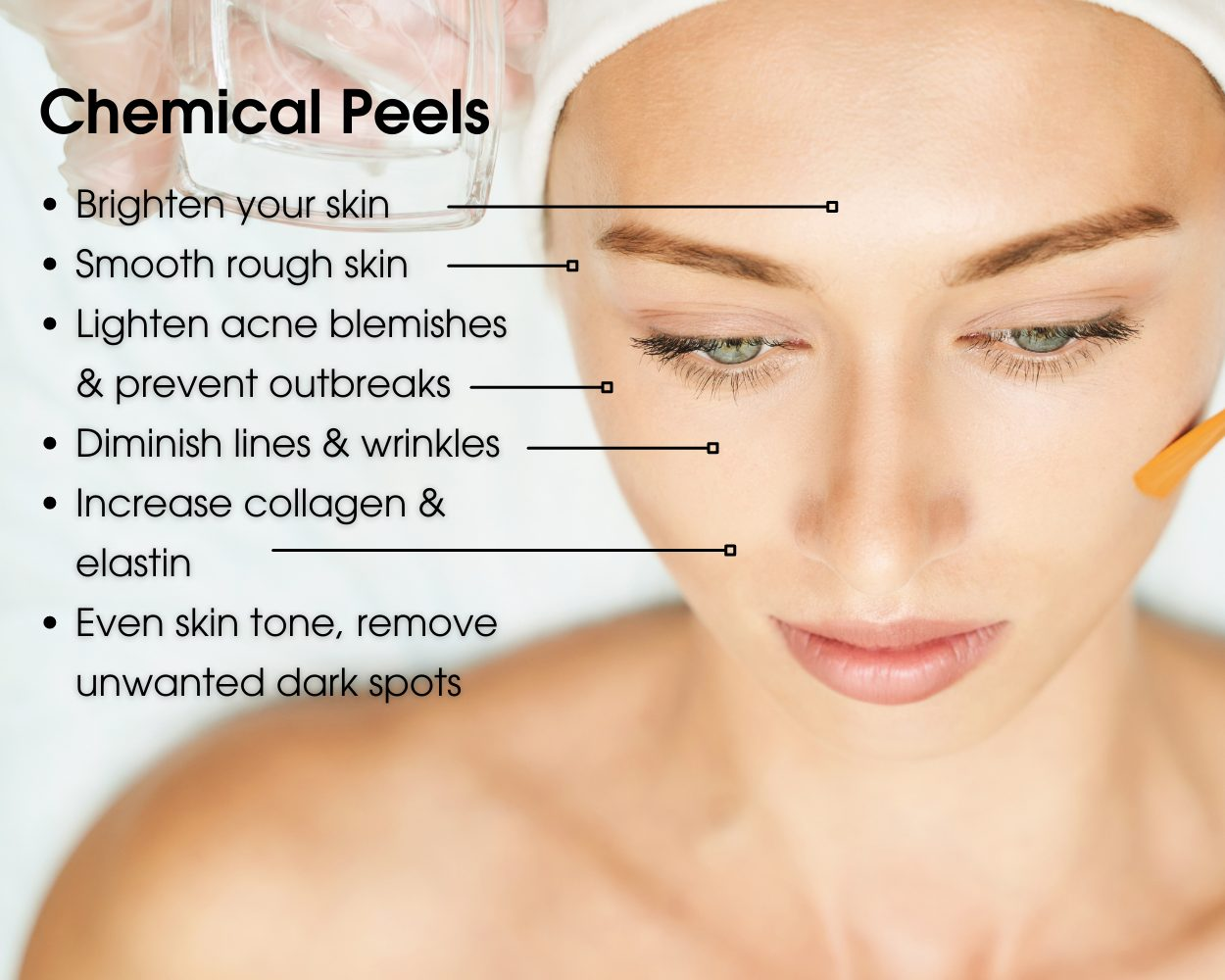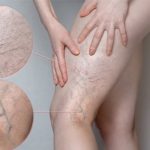What are chemical peels?
Chemical peels are cosmetic treatments that can be applied to the face, hands, and neck. They’re used to improve the appearance or feel of the skin. During this procedure, chemical solutions will be applied to the area being treated, which causes the skin to exfoliate and eventually peel off. Once this happens, the new skin underneath is often smoother, appears less wrinkled, and may have less damage.
There are a number of reasons people may get chemical peels. They may be trying to treat a variety of things, including:
Wrinkles and fine lines, Sun damage, Acne scars, Hyperpigmentation, Scars, Melisma, Uneven skin tone or redness.
How do you prepare for a chemical peel?
Before your procedure, you’ll first have a consultation with the skin care specialist. During this visit, they’ll help you determine what the best treatment option is for you. They’ll let you know the details about the specific peel you’ll be getting, and they’ll ask about anything that could interfere with the peel. This may include whether you’ve taken acne medication, and information about whether or not you scar easily.
Before a chemical peel, you must:
Not use any type of retinol or retin-A topical medication for at least 48 hours,
Inform your skin care specialist about any medications you take,
Not have been on Accutane for at least six months.
How is a chemical peel done?
Chemical peels are typically done in-office; deep peels may be done in an outpatient surgical facility. Before the procedure, they will likely have you tie back your hair. Your face will be cleaned, and eye protection like goggles or gauze may be applied.
Your doctor may numb the area with a topical anesthetic, especially if you’re receiving a deep peel. For deep peels, your doctor may also use a regional anesthetic, which will numb large areas. They are particularly likely to do this if you’re having your face and neck treated. For deep peels, you’ll also be given an IV, and your heart rate will be closely monitored.
Light peel
During a light peel a cotton ball, gauze, or brush will be used to apply a chemical solution like salicylic acid to the area being treated. The skin will start to whiten, and may have a slight stinging sensation. Once complete, the chemical solution will be removed or a neutralizing solution will be added.
Medium peel
During a medium chemical peel, your doctor will use a gauze, special sponge, or a cotton-tipped applicator to apply the chemical solution to your face. This may contain glycolic acid or trichloroacetic acid. A blue color may be added to the trichloroacetic acid, commonly known as a blue peel. The skin will begin to whiten, and your doctor will apply a cool compress to the skin. You may feel stinging or burning for up to 20 minutes. No neutralizing solution is needed, though they may give you a hand-held fan to cool your skin. If you’ve had the blue peel you will have a blue coloring of your skin that may last for several days after the peel.
Deep peel
During a deep chemical peel, you will be sedated. The doctor will use a cotton-tipped applicator to apply phenol to your skin. This will turn your skin white or gray. The procedure will be done in 15-minute portions, to limit the skin exposure to the acid.
What are the risks and possible side effects of a chemical peel?
Common side effects are temporary, and include redness, dryness, stinging or burning, and slight swelling. With deep peels, you may permanently lose the ability to tan.
Chemical peels can, however, have more serious risks and dangerous side effects that can be permanent. These include:
Darkening or lightening of the skin color. These can be more common in people with darker skin.
Scarring. This can be permanent.
Infections. People with herpes simplex may experience flares following a treatment. Very rarely, chemical peels can cause fungal or bacterial infections.
Heart, liver, or kidney damage. The phenol used in deep peels can actually damage the heart muscle, kidneys, and liver, and cause irregular heartbeats.
What to expect after
Recovery time varies depending on which chemical peel you received.
Light chemical peels: Recovery time is about four to seven days. Your skin may temporarily be lighter or darker.
Medium chemical peels: Your skin will recover about five to seven days after a medium chemical peel, though you may have redness that persists for months. Your skin will initially swell, and then form crusts and brown blotches before revealing new skin.
Deep chemical peels: Deep chemical peels will cause severe swelling and redness, with burning or throbbing sensations. It’s common for the eyelids to swell shut. It will take about two weeks for the new skin to develop, though white spots or cysts may last several weeks. It’s common for redness to last for several months.
During recovery, follow your doctor’s postop instructions faithfully. They’ll give you specific instructions for how often to wash your face and moisturize, and which products you should use to do so. Try to stay out of the sun until your skin has healed, and avoid using makeup or other cosmetics until your doctor gives you the go-ahead. You can use ice packs for 20 minutes at a time, or a cool fan, to help relieve discomfort at home.
Chemical Peel Cost in Iran
Having a chemical peel procedure done in Iran would be available at a significantly lower price compared to many other countries. The price of a routine chemical peel in Iran can be expected to range from $150 to $500. Whereas the same procedure would cost from $2,000 to $5,000 in the United Kingdom.




















